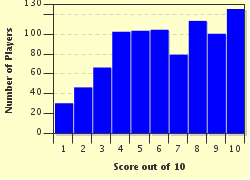Quiz Answer Key and Fun Facts
1. In September 1759, the most famous battle in Canadian history, fought on Canadian soil, brought the French domination of Canada to an end. What battle am I referring to?
2. Prior to the 1759 battle, a French fortress on Canadian soil was taken by the British twice - first in 1745 and again in 1758. What is the name of this fortress?
3. France wasn't the only country that had their sights on Canada. A famous battle in Canadian history was fought along the shores of the Niagara river against the invading Americans in October 1812. Which battle am I referring to?
4. In 1813 the Americans devised a plan to capture Montreal. They were repelled by a much smaller force of French Canadian Militia and their Mohawk allies. Which battle was this?
5. Another incursion by American forces trying to capture Montreal, landed further up the St Lawrence. The decisive battle of this campaign was fought on November 11, 1813, in a farmers field near Morrisburg, Ontario. What was the name of the farm?
6. On August 24, 1814, the British entered the USA from the east coast and burned a good part of this American city. Which city was it?
7. Not all battles on Canadian soil were against invaders, some were fought internally. In 1837 a small force of rebels decided to try and oust the "Family Compact". This was referred to as the Upper Canada Rebellion. Who was the rebel leader?
8. Another, more violent rebellion occurred around the same time in Lower Canada, called the Lower Canada Rebellion. Rioting ensued in Montreal to overthrow the British ruling clique. Who was the main instigator?
9. In 1866 another group decided to invade Canada. The force was put together by one ethnic group that thought Canada needed to be freed from the 'yoke' of British rule. Which ethnic group am I referring to?
10. Starting in the early 1960's and lasting until 1970, a certain group advocating a sovereign Quebec resorted to terrorist bombings, kidnappings and bank robberies. Their actions resulted in the deaths of five people, including a Quebec cabinet minister. What initials were they known by?
Source: Author
kaldav
This quiz was reviewed by FunTrivia editor
bloomsby before going online.
Any errors found in FunTrivia content are routinely corrected through our feedback system.

